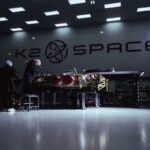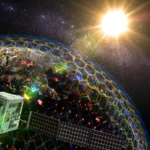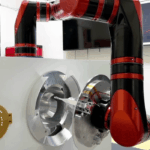A planet’s habitability is determined by a confluence of many factors. So far, our explorations of potentially habitable worlds beyond our solar system have focused exclusively on their position in
phys.org4- Page
Since the 1950s, humanity has been searching for extraterrestrial life with increasingly sophisticated tools. But after decades of space probes, meteorite analysis, radio telescopes, and UFO investigations, what have we
One of the most elegant theories about the origins of life on our planet is that it was kick-started by a delivery from outer space. This idea suggests that prebiotic
A strong geomagnetic storm in spring 2024 brought the northern lights unusually far south, as the auroral oval expanded well beyond its typical position. “I am surprised at how sparse
A cosmological simulation study by researchers from the Shanghai Astronomical Observatory of the Chinese Academy of Sciences has systematically revealed, for the first time, how the interaction between dark matter
A new study led by the Yunnan Observatories of the Chinese Academy of Sciences has detected quasi-periodic oscillation (QPO) signals in an unusual gamma-ray burst (GRB) event. The findings are
Scientists have captured an exceptionally rare, high-resolution view of an active region that produced two powerful X-class solar flares—an achievement rarely possible from Earth. Using the GREGOR solar telescope in
Stars usually form in clusters, which can also form in pairs or groups. Binary clusters (BCs) are defined as pairs of open clusters closely associated both in position and kinematics.
An international research team led by PD Dr. Florian Peissker at the University of Cologne has used the new observation instrument ERIS (Enhanced Resolution Imager and Spectrograph) at the Very
Russia’s space launch site in Kazakhstan was damaged on Thursday after a Soyuz mission took off with Russian cosmonauts and US astronauts onboard, Moscow’s space agency Roscosmos said.
-
 012024 in Review: Highlights from NASA in Silicon Valley
012024 in Review: Highlights from NASA in Silicon Valley -
 02Panasonic Leica Summilux DG 15mm f/1.7 ASPH review
02Panasonic Leica Summilux DG 15mm f/1.7 ASPH review -
 03How New NASA, India Earth Satellite NISAR Will See Earth
03How New NASA, India Earth Satellite NISAR Will See Earth -
 04From Polymerization-Enabled Folding and Assembly to Chemical Evolution: Key Processes for Emergence of Functional Polymers in the Origin of Life
04From Polymerization-Enabled Folding and Assembly to Chemical Evolution: Key Processes for Emergence of Functional Polymers in the Origin of Life -
 05And Thus Begins A New Year For Life On Earth
05And Thus Begins A New Year For Life On Earth -
 06Astronomy Activation Ambassadors: A New Era
06Astronomy Activation Ambassadors: A New Era -
07SpaceX launch surge helps set new global launch record in 2024





